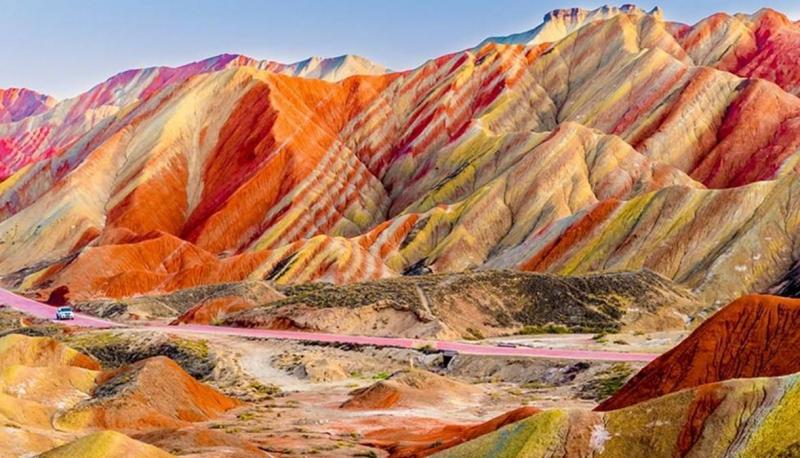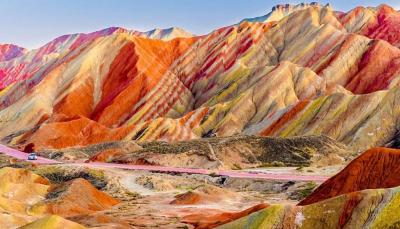Great works of art take time. The Changyi Danxia hills in China have been shaped and made magnificent by nature over the past 24 million years, through the same collision of the Indian and Eurasian plates that produced the Himalayas. As they have eroded over time, at a rate of approximately 8 meters per century, the red sedimentary rocks, gravel stone, and siliceous rocks have been pushed to the surface and exposed, leading to a stunning canvas for this area with a "layered cake effect." Historically, the Changyi region was a thriving economic center of the Silk Road. Here, Emperor Shu Yang of the Sui Dynasty held his famous world exhibition. Even Marco Polo praised its vibrant culture.
The newly established geological park is divided into two main areas: the Changyi Kisaai area (meaning "the seven colors") covering 510 square kilometers, and the scenic Danxia area, along with the Peng Gu area spanning 332 square kilometers (meaning "glacier valley"). In earlier geological times, oceans and lakes covered the region. Over thousands of years, the waters evaporated, leaving behind substantial deposits of sand that solidified and endured the elements. Danxia terrain is found only in Southeast, Southwest, and Northwest China. Changyi Danxia is located 1,700 kilometers from Beijing and 30 kilometers from the city of Changyi, forming part of the Qilian Mountain range, which nearly reaches Mongolia. Its other red valleys include deep ravines, rugged columns, cliffs, and natural pyramids.
The word Danxia is naturally translated as "pink cloud." There are two processes responsible for this astonishing phenomenon. Firstly, it is thought to have formed between the Jurassic and Cretaceous periods, during a significant period of weathering in arid deserts, where weathering stripped the rock to reveal the more complex layers beneath it. The stunning red, brown, yellow, and green sandstones that layer upon each other are attributed to the presence of different oxides. The red sandstone contains iron oxide; the yellow, iron sulfide; the green, chlorite; and the brown, oxidized limonite. These chemical compounds react with minerals in the groundwater, which permeated the grains of sandstone and solidified them. This water carries rare minerals that cause this colorful reaction, leading to the coloring of Danxia and painting lines across the landscape like brush strokes on a canvas.
While Danxia terrain originated in China, other colorful geological formations around the world include the Rainbow Mountains in Peru, the Spectrum Mountains in British Columbia, and the Rainbow Mountain range in the United States. Changyi Danxia was listed as a UNESCO World Heritage site in 2009, and it is considered one of the most beautiful sites in China.




